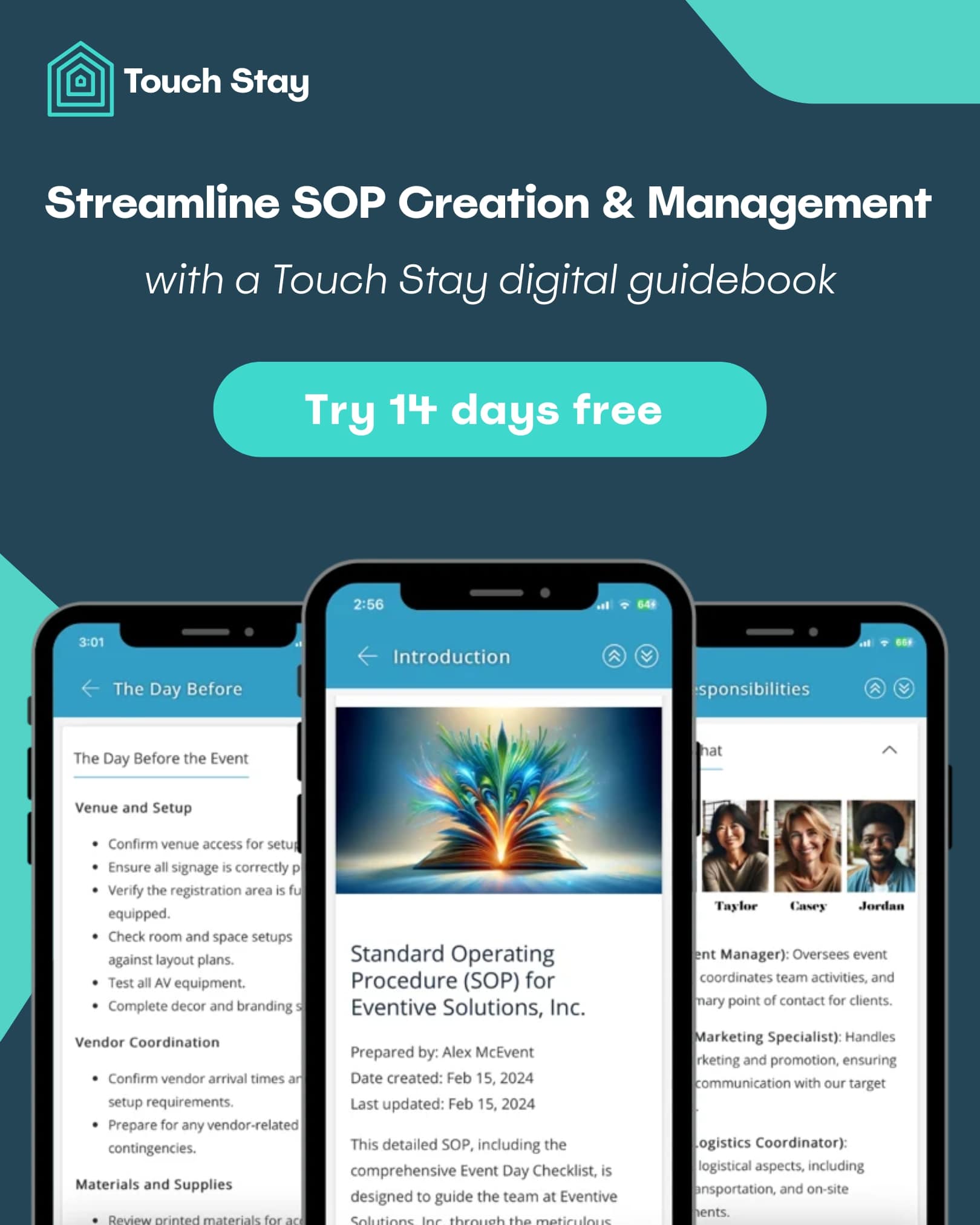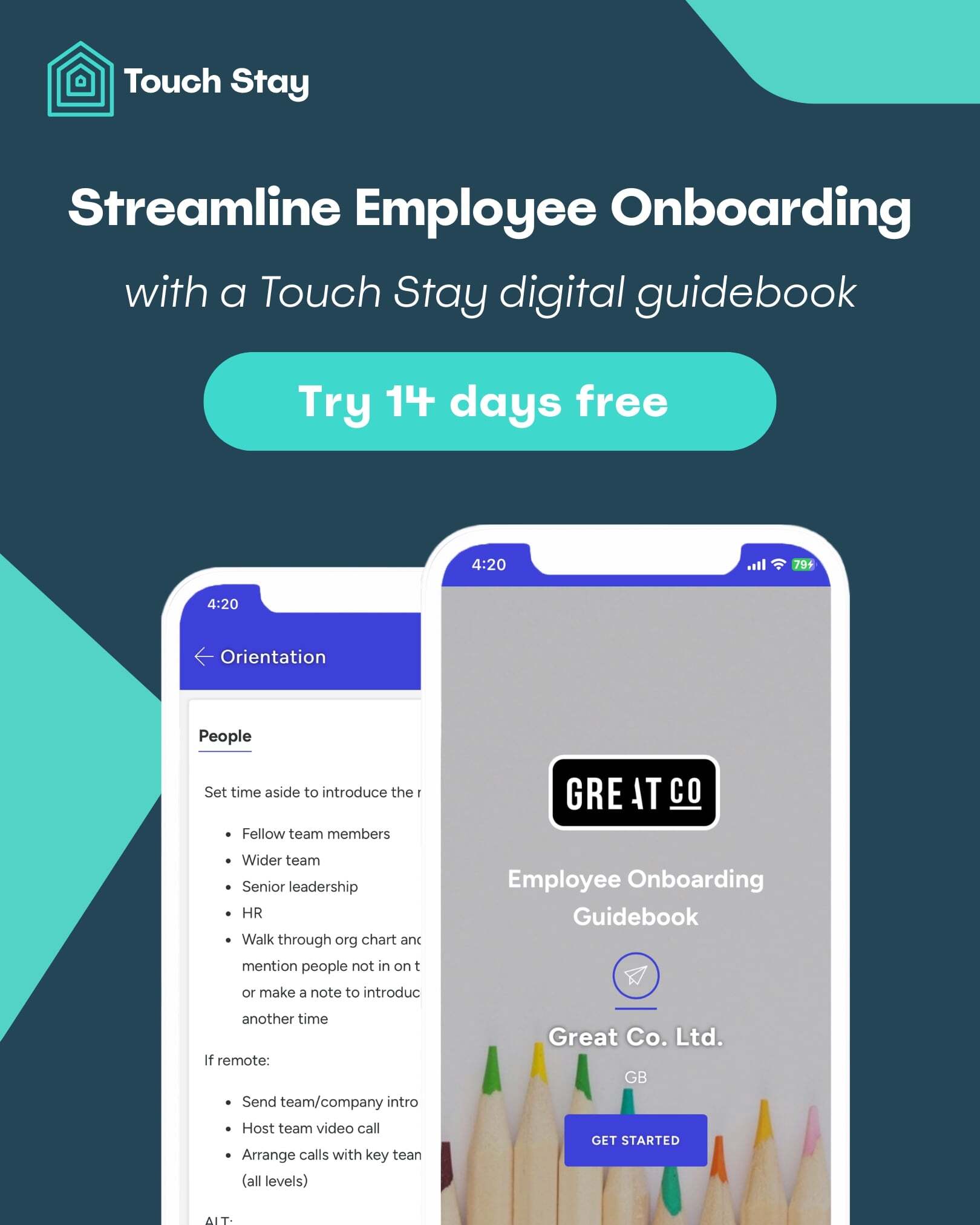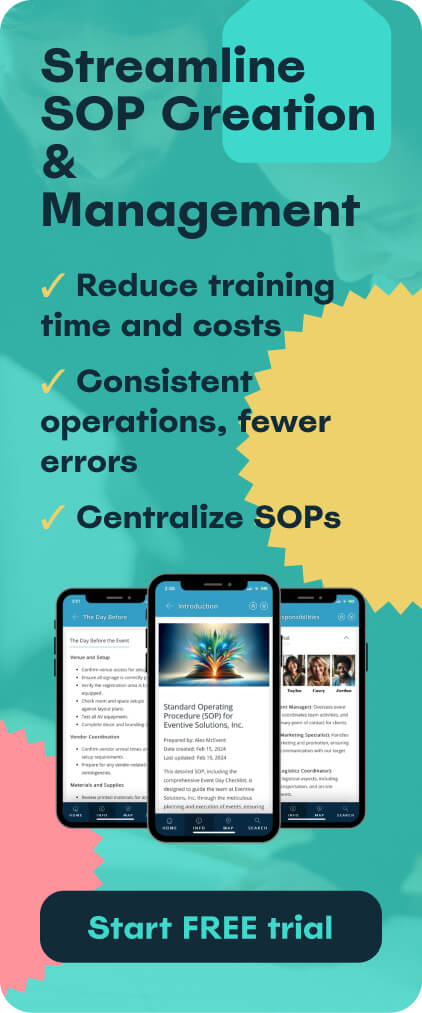If you’re in the thick of starting your rental business, chances are you will have come across the term SOP (standard operating procedure). SOPs play a key role in how your business operates, ensuring that you and your team are on the same page, so that you can execute your organisational processes effectively.
By implementing effective SOPs in your business, your activities always remain streamlined, and by communicating your SOPs well, you can ensure that all of your team are clear on what the processes and procedures in your business are. This leaves minimal room for error or encountering problems in your day-to-day workflow.
With so many benefits and uses, how exactly do you go about writing Standard Operating Procedures? In this guide, we've delved into how you can write a thorough and thoughtful SOP, outlining the essential stages you need to consider.
What is a SOP?
Firstly, what does SOP stand for? SOP is an abbreviation for Standard Operating Procedure. It’s a document detailing a set of instructions which outline the necessary steps to take to complete a process and achieve a desired end goal.
Without having an SOP for the processes in your organisation, you fail to have outlined what needs to be accomplished and how exactly this needs to be executed. This is particularly important if you have new employees joining your team and to ensure that all members of your team are consistent in their delivery of business tasks and services.
What is the purpose of Standard Operating Procedures (SOPs)?
Before you begin creating a standard operating procedure, it’s first important to understand its purpose. The most fundamental purpose of SOPs is to offer well-written, concise, and clear-cut guidelines for you and your team to execute processes and operations consistently.
SOP creation is also essential to comply with various industry regulations and standards relating to workplace health and safety and hygiene, as well as other areas including data protection. Therefore, SOPs are entirely necessary to minimise putting yourself, your team, and your clients at risk.
Why are SOPs important?
Without creating an SOP for your organisational processes, you’re failing to put measures in place that ensure that tasks and procedures in your business are executed correctly and efficiently. This maintains the quality of your operations and also leaves little room for error.
Having SOPs in place that can be referred to by all members of your team ensures that everyone is on the same page, meaning that your business actions are cohesive, uniform, and consistent. Therefore, SOPs create an essential blueprint for all of your business operations, helping to keep you on a steady path to success.
How to write a standard operating procedure
Now that we’ve got you up to speed on what standard operating procedures are and their significance, it’s time to tackle the next stage: how to write a good SOP.
There are a series of considerations you must make to write a comprehensive and effective SOP. To take the load off of you, we’ve delved into this topic to pull out the 12 most important steps that will support you in writing SOPs for your business:
#1 Identify the key processes in your business
Before even beginning to put pen to paper, you must make an effort to identify the processes and procedures in your business which require an SOP.
Stepping back to view your business as a whole will help you to identify processes that you need to think about developing an SOP for. You can then prioritise areas that you feel may more urgently need to have an SOP in place and tackle them head-on.
Discussions with your employees, managers, and other stakeholders are also critical during this stage. These individuals will be able to shed light on processes that they have more involvement with regularly which require an SOP to be developed, which you may not have identified at first glance.
#2 Define your scope
When undergoing the SOP process, you need to focus on the needs of the department in your business that the SOP in question applies to the most.
In doing this, you can be sure that your SOPs work within the confines and parameters of the roles and responsibilities they apply to. By understanding and defining the scope of your SOP, you can ensure that your SOP can be successfully followed by those who will use it.
#3 Define your end goal
Whilst it may seem far away, knowing what you want your end goal for your SOP to be when you are writing a standard operating procedure is crucial. In knowing this, you can begin to think about the critical steps needed to achieve this end goal, which will be the details that you then add to your SOP.
#4 Speak to stakeholders
When it comes to developing an SOP, stakeholders can be anyone in your team and organisation who has relevant insight to offer when you are developing an SOP. These can include your employees who you know will be using the SOP when it’s finalised or your management team who will have a good understanding of how to develop and deliver best practices in business.
Make sure you’re actively involving these individuals during the SOP development process so that you know you’ve considered all key parties who might be affected.
#5 Determine who your audience is
By understanding the audience that will be reading your SOPs, you can better recognise how you should be writing SOPs. You must consider several steps relating to who your audience is to ensure the successful development of your SOPs.
Firstly, are your audience new employees? If so, you need to ensure that your SOP is detailed enough and focuses on the training and knowledge that these individuals need to acquire. If your audience is large or includes multiple people across different sectors in your business, you need to communicate your SOP in a way that specifies who exactly the SOP is for, and how different roles may slot into its implementation.
Finally, does your audience have prior experience and knowledge on the topic of your SOP? If not, are you ensuring that you’re keeping jargon to a minimum and only using terminology that they will understand? Your SOPs should always be communicated clearly so that they can be easily comprehended by your audience and avoid confusion.
#6 Choose your format
Standard operating procedures can take on several different formats, so understanding what these are in advance will help you decide what the best way to display your SOPs may be. There are three main types:
- Simple: this SOP format is best for low-complexity and simple SOPs which can be displayed in an easy and uncomplicated way.
Typically, only a small number of sections are kept in the document, including an explanation of the purpose of the SOP, a step-by-step list of its process, and the responsibilities required by individuals. -
Hierarchical: this is also referred to as a complex SOP format. It is well-organised, typically in sections with headers and a table of contents, to better structure the SOP and make it more digestible.
Sections in this SOP format typically include an overview of the SOP, its purpose, detailed step-by-step instructions for its implementation, and those who are responsible for its stages of implementation.
- Flowchart: this is the most creative format for writing an SOP that involves creating a flowchart figure which can outline both more complex and simple procedures of the SOP.
These flowcharts usually include: what the purpose of the SOP is, a well-organised and easy-flowing chart to visually display the SOP process, and the responsibilities of the individuals involved.
Other formats for an SOP include videos and interactive courses too, which you may prefer to create if you want a more visual or hands-on way for your audience to digest your SOPs.
#7 Choose or create a template
You may be able to find existing SOP templates online for creating a SOP, or many SOP softwares offer a selection of their own templates for you to choose from. Equally, you can create your own SOP templates in these applications and software which you can use for future SOP development.
Here at Touch Stay, our adaptable digital guidebooks allow you to create and manage SOPs for your business. Regardless of your industry, you can make the most of our range of existing templates to use as the foundation of your business SOPs. Or, you can craft your very own easily to add your personal touch.
You can browse a range of existing Touch Stay guides, showcasing how the sky's the limit when it comes to creating an SOP for your organisation with our application.
#8 Conduct thorough research
Alongside getting insight and information from stakeholders, you need to conduct your own research to gather as much information as possible before creating an SOP.
In doing this, looking at existing procedures or policies that you have in place can be a great starting point for building your SOP. You can review these and analyse them to then weave anything of importance into your own SOP.
There’s also nothing quite as insightful as looking at the process you’re developing an SOP for in action. Take the time to review how this is performed to better understand how it can be improved by identifying the problems or challenges that may occur.
#9 Write your SOP
Now it’s time to get to it! You can begin writing an SOP draft. We’d recommend including the following sections and elements when you’re creating an SOP:
- Title page: including the title of the procedure itself, any publication or revision dates, the name of your business and the sector that it applies to.
- Table of contents: this helps you to better organise your document and easily navigate through it. You might only feel this is necessary if you have a more in-depth and lengthy SOP.
- Preparatory information: outline the details of what your SOP is, the SOP purpose, and the scope it has. Additionally, outline the roles and responsibilities that people have in the SOP and who the SOP is most pertinent to. If there are any materials or resources that are needed, outline this too alongside any hazards that may be present and precautions that need to be taken.
- The procedures and methodology: it is essential in this section to offer a detailed description of the methodology of the SOP with step-by-step guidelines of how a person can carry it out.
- Additional sections: you may also wish to include a glossary of definitions should your audience need to clarify any terminology. Having a ‘tips for troubleshooting’ section to outline things that could go wrong and how this may come into play can also be beneficial.
#10 Test your SOP and gain feedback
Now it’s time to put your creation into practice by testing whether your SOP document works and achieves the outcome that you want it to. During this step, ask relevant team members to put your SOP document into practice too to ensure that the language you’ve used and how you’ve communicated your instructions can be easily understood by others. It’s essential to get your team members and stakeholders feedback during this process as well.
#11 Edit and improve your SOP
Based on the feedback you receive from your stakeholders and team members, and the testing you’ve implemented, you need to address any issues that may have come to light and make any iterations as necessary to your SOP document. Update your existing draft before asking for further feedback from your team and conducting additional tests until you feel that your SOP is in its final stage.
#12 Implement your SOPs and review them regularly
Once you’re happy with your SOP, you can begin implementing it and train your users to use it accordingly. You should always be working to review and refine your SOPs to see how they can be improved over time. This is because as your company and team grow, your SOPs will need to be updated.
Equally, if any external influences, like legislation changes or a change in consumer needs, take place, this is another reason to review your SOPs and see if they need updating.
Are you ready to create an SOP for your business?
Creating detailed and developed SOPs is a crucial element of managing your business operations. Here at Touch Stay, we’ve worked hard to produce a user-friendly application that allows you to create everything from simple to complex SOPs in a visually appealing format that will streamline your business procedures.
Sign up for a free trial of our digital guidebook application now to start writing professional SOPs to streamline your business operations and contribute to the success of your organisation.

Ned
Ned has clocked up over 11 years in digital marketing and comms, with a strong focus on creating engaging content for a range of brands and agencies. When he’s not writing, he can be found digging for records, peering through his telescope at the night sky, or onboard his local lifeboat where he volunteers as a crewmember.
Be the first to know!
Join our newsletter for early access to:
- ✅ Free guides
- ✅ Pro tips & tricks
- ✅ Time saving tutorials
- ✅ Latest blog posts
- ✅ Checklists & templates


















%20%26%20how%20to%20create%20one.png?width=50)

